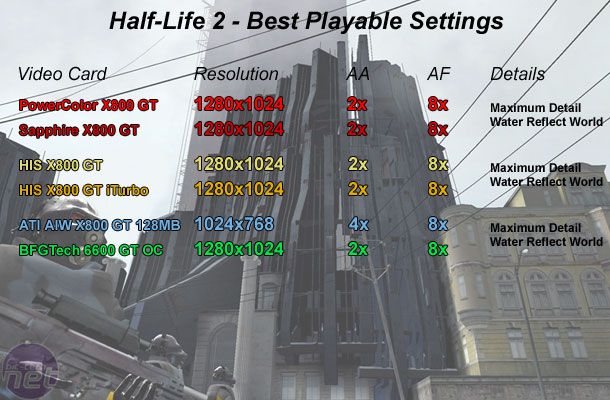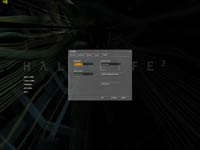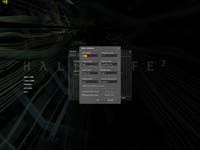
Half-Life 2
Publisher: Valve SoftwareWe are using the full retail version of Half-Life 2 with the latest patch downloaded and installed via the steam network. We did a manual run through from a section of the "Water Hazard" level for the purposes of our comparison. It is a typical scenery and surrounding found throughout large portions of the game and it is very shader intensive.
As a backup to verify that the settings were playable across the whole game, we used a section of the "Follow Freeman!" level located inside City 17 in order to determine that the chosen settings were playable in other intensive portions of the title. However, a frame rate was not recorded for this section of the title - it was merely a loop back to ensure that our settings were playable in the most graphic-intense parts of the game.
Anti-Aliasing and Anisotropic Filtering were controlled from inside the game, and thus the drivers were left set to "Application Controlled".
Below is a table of the best-playable settings that we found best for each video card configuration. In this title, we found that 25 to 30 frames per second minimum (or higher) and a target of 60 frames per second (or higher) for the average frame rate delivered smooth and fluid game play.

The Sapphire and PowerColor Radeon X800 GT's were slightly faster than the HIS X800 GT due to the differing clock speeds it seems. We found that the average frame rate increased by a single frame, while the minimum increased by three frames per second as a result of the slightly increased memory clock speed.
ATI's Reference All-In-Wonder X800 GT 128MB was best playable at 1024x768 4xAA 8xAF with the water detail set to Reflect World. We found that the lack of memory bandwidth was a problem for the card in this title. As such, it struggled at 1280x1024 in some of the more graphic intense portions of the title.
BFGTech's 6600 GT OC was best playable at 1280x1024 2xAA 8xAF with water detail set to Reflect World. Rather unbelievably, we found that BFGTech's card was faster than all of the Radeon X800 GT's, except for the enhanced HIS Radeon X800 GT IceQ II, which delivered an average frame rate that was one frame higher than the BFGTech 6600 GT could achieve while the minimum frame rate remained the same.

MSI MPG Velox 100R Chassis Review
October 14 2021 | 15:04







Want to comment? Please log in.